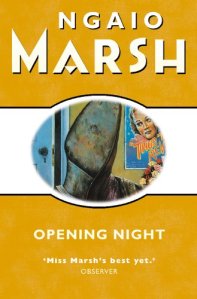 At some point in our lives, many of us will have to deal with the problem of difficult neighbours. Loud music and late-night parties, badly-behaved children, disputes over parking and damage caused by cats and dogs are all things that can make life stressful – but most of us wouldn’t resort to murder as a solution. However, that is exactly what seems to have happened at Riverview Close, a street of six large, luxurious houses in an affluent area of London.
At some point in our lives, many of us will have to deal with the problem of difficult neighbours. Loud music and late-night parties, badly-behaved children, disputes over parking and damage caused by cats and dogs are all things that can make life stressful – but most of us wouldn’t resort to murder as a solution. However, that is exactly what seems to have happened at Riverview Close, a street of six large, luxurious houses in an affluent area of London.
The residents of Riverview Close include a doctor, a dentist, a retired lawyer, a chess grandmaster and two former nuns, all of whom have been getting on well together and leading peaceful lives. Everything changes with the arrival of Giles Kenworthy and his family, who are noisy and inconsiderate and succeed in annoying everyone else in the Close. When the residents learn that the Kenworthys are planning to cut down a beautiful tree and build a new swimming pool in its place, they decide to hold a meeting to discuss the situation – but a few weeks later the problem is solved anyway, as Giles is found dead, having been shot with a crossbow.
Five years later, author Anthony Horowitz (who uses himself as a character in his own novels) is looking for a subject for his new book. His previous four have been accounts of mysteries he has investigated alongside the private detective Daniel Hawthorne, but it seems there are no new mysteries to solve – and his publisher is putting pressure on him to start writing. Anthony decides to write about one of Hawthorne’s older cases instead, which happens to be the murder of Giles Kenworthy. Hawthorne agrees to share the details of the investigation with him, but warns him that the ending isn’t very satisfactory.
With large sections of the book set in the past and written in the third person from the perspectives of the residents of Riverview Close, this means Horowitz himself plays a much smaller part in this novel than he did in the earlier books in the series (the first one is The Word is Murder, if you’re wondering). Although I love these books, I know there are a lot of readers who find it irritating and egotistical of Horowitz to use himself as a character, but I think that would be less of a problem with this particular novel.
Because we see less of Anthony, there’s also less time spent on his interactions with Hawthorne, which is a shame as that’s one of my favourite things about this series. I had hoped to learn more about Hawthorne as each book has been slowly adding to our understanding of his character and background, but there aren’t really any major revelations about him in this instalment. There are lots of other interesting characters to get to know, though, including the members of the various households that make up Riverview Close; I particularly enjoyed meeting the two old ladies, May and Phyllis, who used to be nuns but now own a tea shop/book shop that sounds like a great place to visit!
They did not stock any modern, violent crime novels, especially ones that contained bad language. A casual reader looking for Harlan Coben, Shari Lapena, Ian Rankin or even James M. Cain (The Postman Always Rings Twice) would have to continue down the hill to Waterstones at the corner. What they specialised in – exclusively – was cosy crime.
They also stocked a range of gifts that were all crime-related, including the Agatha Christie tea towel May had used to wipe her hands. Other novelties included a Sherlock Holmes magnifying glass, Midsomer Murders mugs and T-shirts, Cluedo jigsaw puzzles and a box of assorted chocolates marked ‘POISONED’, a tribute to the great novel by Anthony Berkeley.
The mystery itself is an interesting one as all of the suspects have the same motive – Giles Kenworthy’s selfish, inconsiderate behaviour – and although I was convinced I had guessed the culprit correctly, it turned out I was wrong. I did wonder why Horowitz (the character) didn’t just look up the solution to the murder on the internet rather than waiting for Hawthorne to tell him the story bit by bit and getting frustrated about not knowing the ending, but that’s just a minor quibble. I’ll look forward to the next book in this series, assuming that there’s going to be one, but I’ll also continue to hope for a new book in the Magpie Murders series!
Thanks to Century for providing a copy of this book for review via NetGalley.







